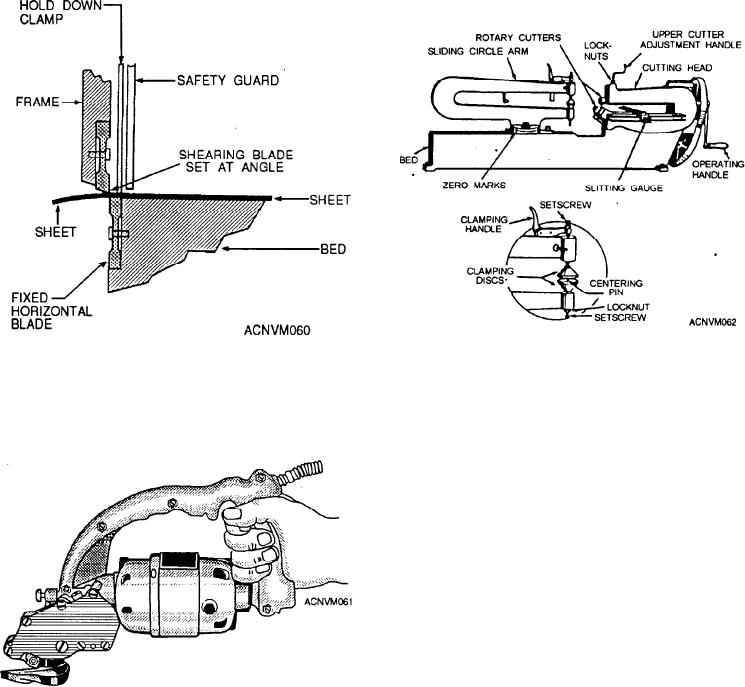
Figure 12-60.--Principle of a shear.
Figure 12-62.--Ring-and-circle shear.
many ships for special types of cutting jobs. When
available, these special shears can simplify your work.
Ring-and-circle shears are used to cut inside and
outside circles. These shears may be hand operated,
such as the one shown in figure 12-62, or they may be
power driven. The following procedure is used to
operate a ring-and-circle shear:
1. Select a piece of stock of the correct size, and
locate the center of the piece. Mark the center with a
prick punch.
2. Adjust the gauge arm of the machine to the
radius of the desired circle.
3. Place the stock in the sliding circle arm. Locate
the center of the stock by working the centering pin of
Figure 12-61.--Portable power-operated shearing tool.
the clamping device into the prick-punch mark.
4. Secure the metal in position by depressing the
a crosshead and at a slight angle to the position of the
clamping handle.
lower blade. The shearing action starts at one end of the
5. Set the locknuts of the upper cutter adjustment
sheet and continues across the sheet in much the same
handle so that the upper cutter, in its lowest position,
way that a pair of scissors cuts paper.
produces a clean cut.
Portable, power-operated shears of the type shown
6. Lower the upper rotary cutter until it comes in
in figure 12-61 are also used to cut sheet metal. They
firm contact with the metal.
can be used to cut curves and notches as well as to make
straight cuts. These tools cut metals of various gauges
7. If the shear is a hand-operated type, turn the
according to the capacity indicated on the nameplate.
operating handle. If it is a power-driven type, push the
starting button. The blank feeds into the shear. Continue
There are special types of shears, some hand
.
operated and some power driven, which are used on
cutting until the disk is cut out completely.
12-27

